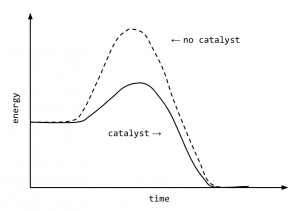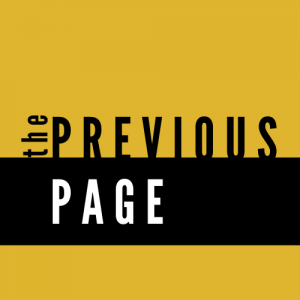Narratives of Harm Reduction
For Roz, harm reduction is simple- it is the prioritization of life, and maintaining life at all costs. This mindset and methodology directly contrasts with society’s notions of life and death, where those deemed “acceptable” are those that “should” have their lives guaranteed (or maintained by medical interventions). My goal, through this ethnographic website, is not only to provide a platform to serve as another vessel for Roz’s stories, but also to show the connections between harm reduction and trauma through the framework of Roz’s perspective.
Roz’s Reflections on Harm Reduction
I initially connected with Roz after seeing her name and image in countless articles and interviews in the Philadelphia local media; learning about Roz’s activism in her community also means gaining insight into the trauma she personally has endured.
Roz, in speaking out and bringing awareness to the benefits of harm reduction, continually has to reconcile with her own trauma. She described to me that trauma had early origins in her life; while her life narrative has brought her into many different circles (she speaks to a wide variety of audience, from children to political leaders), she felt as if she “didn’t belong.” This acute awareness of her feelings and a sense that she didn’t “belong” in many of society’s constructs affected her during her childhood athletic career:
“I’ve always been an athlete, you know- it’s been around groups of people. But I always felt like I didn’t belong, you know, like, I was this little Puerto Rican Dominican girl doing gymnastics- you don’t see too many people like me doing gymnastics, you know. I was the fastest girl on my track squad, and Puerto Ricans don’t run fast; I mean a lot of times the black girls were faster than me, so everything was different for me. I always felt like I didn’t belong or because I felt like I didn’t belong I push myself harder, even harder, to kind of, you know- I work hard to to hold this position, to hold this spot.”
In a sense, she works hard to hold this status of “life” that the rest of her family members were not afforded, due to the traumatic health effects of structural violence. I could see this in the relentless outpour of physical, emotional, and spiritual energy into her community.
Not only does Roz’s continual work and support in the Kensington community contribute to an increased societal presence of harm reduction frameworks, but she personally understands the emotion that Sunshines feel when embraced by the harm reduction community. Trauma, plainly stated, is emotional; having a community that understands trauma, rather than placing further blame on the traumatized individual, is a cornerstone in an individual feeling prepared to confront society.
Roz explained this dynamic to me when we were discussing one of the interviews she had recently done for a television station. I was asking about her innate ability to connect with people, viewing them for their humanity rather than through the biased perception of societal judgement, when she told me about how something as simple as an interview question evokes emotion so strong that she is able to reconcile what a Sunshine must feel:
“So many people processes [trauma] so differently…he asked me this question that had me like, flustered and overwhelmed and full of grief with one question. And I almost felt like a sunshine, right, when I have conversation [with them] and I see them break down. It just reminded me.
He asked me this one question, he says ‘What would you say if your twin sister, your brother, and your boyfriend were here right now?’
And, mind you, they’re all dead. You know, my twin sister committed suicide. My boyfriend was murdered. My brother was murdered. And I don’t know what happened… I don’t know what it was about that question that totally had me fall apart and trying to get my shit in order. It was like man, I really feel like John [a Sunshine] when I asked him what would it take for him to go into recovery.
And I felt like him, like, I can see the pain and the grief and I automatically felt the same emotion for a different question. I was hardly able to breathe, hardly able to get my composure. I’m like them; trauma runs so, so deep that even a question can trigger such emotion and [can] even tap into what you really want. Talking about it, for the first time in years, that’s how I feel when I talk to my Sunshines; I share space with my Sunshines, and listen to them; it is like wow, profound. it’s like….
It just, like, struck a chord with me when he asked that question, and putting myself in the shoes of that Sunshine, I mean I don’t use or anything, but I felt like that same emotion was present and was like how John felt.”
Visualizing a Metaphor for the Benefits of Harm Reduction
One can infer from Roz’s stories that values of harm reduction take into account the power of emotion. In a way, harm reduction figuratively decreases the “activation energy” required to surpass that previously insurmountable amount of emotion that hinders an individual from moving forward. Harm reduction, acting through the intentions and care from community figures like Roz, serves as a catalyst would in the image below-

Here, a visualization of “activation energy” in physics can serve as a metaphor for the power in harm reduction. The trauma of structural violence creates an emotional “bump” or hill as expressed in Roz’s stories, and an individual can only get to the “other side” (represented as a continual state of healing) when something interferes to decrease the height of the hill.
Roz articulated to me that she oftentimes is able to emotionally prepare herself (create her own activation energy through intention and preparedness strategies):
I got to prepare myself because the questions are going to come up, and it may be emotional because they are calling my brother’s name out loud; they are calling my twin sisters name out loud. It is a visual of people mourning, and for some people, it may be new. It may be as new as last week, so I have to emotionally and mentally prepare myself for for situations like this.
Roz’s stories are ethnographic facts detailing the workings and processes of harm reduction. Through her perspective, we can see harm reduction as a mindset that a community cultivates; it is so much more than a specific set of practices like needle recycling or administering Narcan. Harm reduction is simply giving individuals the subtle boost that they need to grasp life and hold onto it.


